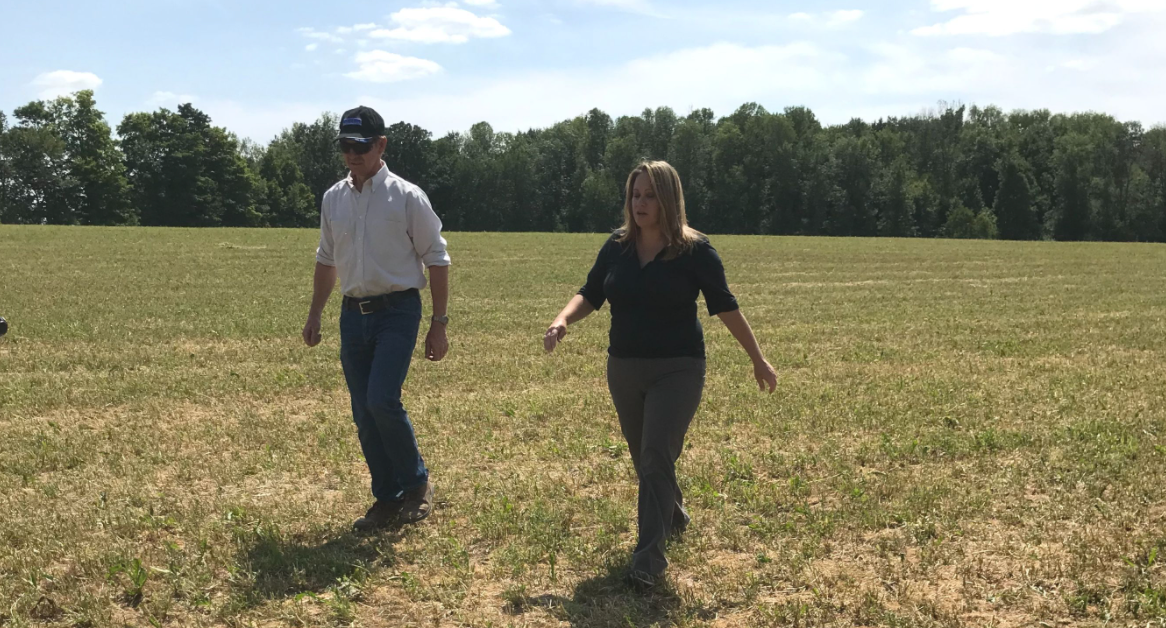Estimated reading time: 2 minutes | Originally published by The Water Institute
Agricultural phosphorus losses contributing to eutrophication of surface water is a global concern. The re-eutrophication of Lake Erie over recent decades has emerged as a cautionary lesson in long-term watershed management. Despite controls on phosphorus discharges from point sources, particularly agriculture, and the application of conservation practices on farm fields, harmful and nuisance algal blooms are again common in Lake Erie and affect tourism, recreation, commercial fisheries and property owners in communities in USA and Canada alike. In order to mitigate phosphorus losses from farm fields, a team of Waterloo researchers led by Geography and Environmental Management Professor and IC3 member, Merrin Macrae, are proposing a five‐step plan to provide guidance and bring regionally‐tailored, adaptive and cost‐conscious conservation practices into watershed planning.
Although it’s generally agreed that using multiple conservation practices in unison within a field will be more effective than using single conservation practices, asking farmers to adopt multiple conservation practices and hoping that one or two of them may work is not a feasible solution given the costs associated with their implementation. The challenge with this wholesale application of conservation practices is that subtle differences in microclimate, soils, and topography may undermine their efficacy or may even produce unexpected adverse outcomes.

Macrae and her team used the Lake Erie watershed as a case study because of its unique physiographies, which include local differences in climate, geology, soils and topography, and land use, which together have implications for both phosphorus transport from agricultural fields and the efficacy of conservation practices in mitigating phosphorus losses. Although their research is specific to the Lake Erie watershed, their framework can be transferred across broader geographic regions to provide guidance for watershed planning.
We believe that it is possible to provide a “toolkit” of general principles that can guide decision-makers toward conservation practices choices that are appropriate for a given region. This does not negate the importance of individual fields, farms and fertility management approaches in optimizing conservation practices selection, but it should lead to choices with the greatest likelihood of success.
The team hopes that by moving away from “one-size fits all” conservation practice recommendations and towards an understanding that different suites of conservation practices may be more appropriate across different phosphorus management regions, there can be a move toward a more flexible and cost-effective conservation practices approach that has the potential to vastly improve water quality. Another reason the team believes a more tailored approach should be taken is to ensure that trust between farmers, managers and scientists is built and maintained.
These broad recommendations, that may or may not be effective in a particular landscape, erode the trust that is necessary in co-developing solutions to complex issues such as agricultural water quality,” said Macrae.
The team proposes a more strategic approach to the recommendation of conservation practices and proposes that an adaptive management framework should be implemented to identify, assess and mitigate trade-offs in the implementation of various conservation practices, to foster collaboration and the sharing of experiences, and to clearly communicate results to stakeholders across the different phosphorus management regions.
The research team is made up of Water Institute members: Professor Merrin Macrae, Geography and Environmental Management; Professor Helen Jarvie, Geography and Environmental Management; and Profesor Roy Brouwer, Economics.
This research is part of the Global Water Futures project, Agricultural Water Futures, led by Merrin Macrae.